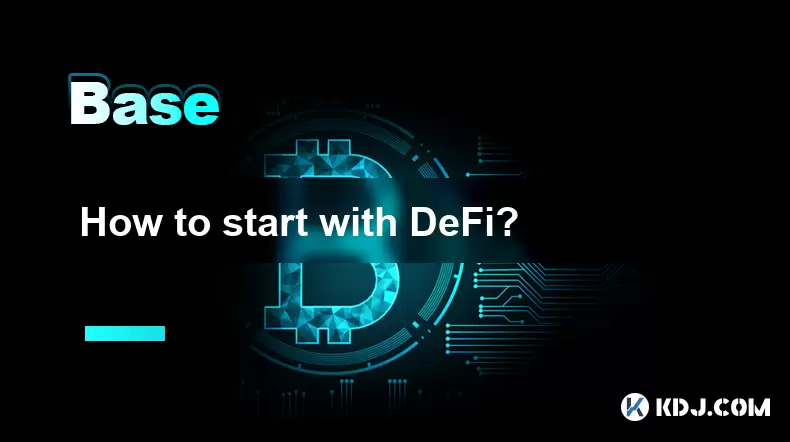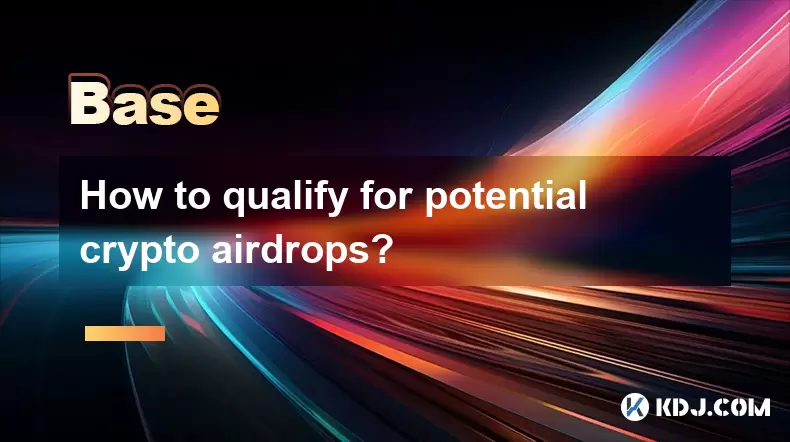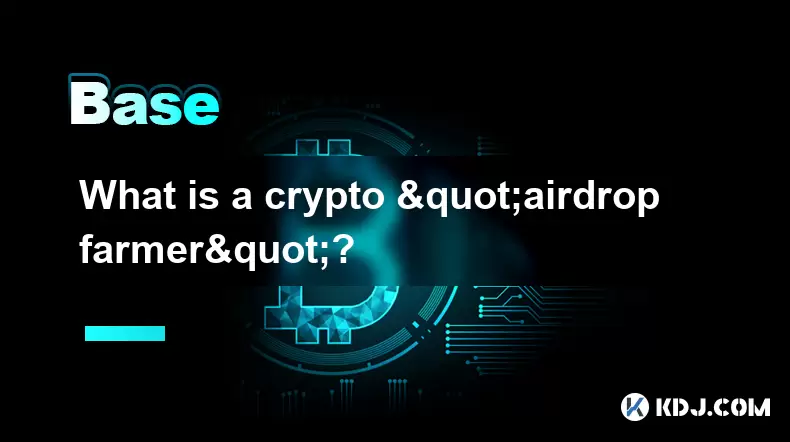-
 Bitcoin
Bitcoin $115100
-2.99% -
 Ethereum
Ethereum $3642
-1.38% -
 XRP
XRP $3.027
-5.51% -
 Tether USDt
Tether USDt $1.000
-0.05% -
 BNB
BNB $763.4
-1.32% -
 Solana
Solana $177.2
-5.42% -
 USDC
USDC $0.9999
-0.02% -
 Dogecoin
Dogecoin $0.2247
-6.47% -
 TRON
TRON $0.3135
0.23% -
 Cardano
Cardano $0.7824
-4.46% -
 Hyperliquid
Hyperliquid $42.53
-0.97% -
 Stellar
Stellar $0.4096
-6.09% -
 Sui
Sui $3.662
-2.61% -
 Chainlink
Chainlink $17.63
-3.57% -
 Bitcoin Cash
Bitcoin Cash $536.3
2.94% -
 Hedera
Hedera $0.2450
0.34% -
 Avalanche
Avalanche $23.23
-3.15% -
 Litecoin
Litecoin $112.2
-1.23% -
 UNUS SED LEO
UNUS SED LEO $8.976
-0.30% -
 Shiba Inu
Shiba Inu $0.00001341
-2.72% -
 Toncoin
Toncoin $3.101
-2.44% -
 Ethena USDe
Ethena USDe $1.001
-0.05% -
 Uniswap
Uniswap $10.08
-1.97% -
 Polkadot
Polkadot $3.938
-2.77% -
 Monero
Monero $323.9
0.87% -
 Dai
Dai $0.9999
-0.02% -
 Bitget Token
Bitget Token $4.481
-1.69% -
 Pepe
Pepe $0.00001199
-5.94% -
 Aave
Aave $288.2
-0.68% -
 Cronos
Cronos $0.1279
0.36%
How to start with DeFi?
DeFi, or Decentralized Finance, uses blockchain technology to offer peer-to-peer financial services like trading, lending, and borrowing through smart contracts, removing traditional intermediaries such as banks.
Jul 25, 2025 at 08:22 am

Understanding the Basics of DeFi
DeFi, short for Decentralized Finance, refers to a financial ecosystem built on blockchain technology, primarily on Ethereum, though other chains like Binance Smart Chain, Solana, and Avalanche are gaining traction. Unlike traditional finance, DeFi removes intermediaries such as banks and brokers, enabling peer-to-peer financial services through smart contracts. These contracts are self-executing and automatically enforce agreements without human intervention.
To begin with DeFi, one must understand its foundational components: decentralized exchanges (DEXs), lending protocols, stablecoins, and yield farming. Each of these plays a crucial role in the DeFi ecosystem and serves as a gateway for newcomers.
Setting Up a Wallet and Acquiring Cryptocurrency
Before interacting with DeFi platforms, users must set up a non-custodial wallet. The most popular options include MetaMask, Trust Wallet, and WalletConnect-compatible wallets. These wallets allow users to manage their private keys and interact directly with decentralized applications (dApps).
To get started:
- Download and install MetaMask as a browser extension or mobile app.
- Create a new wallet and securely store the recovery phrase in a safe location.
- Fund the wallet with Ethereum (ETH) or other native tokens depending on the chain you're using.
It’s essential to understand gas fees, which are transaction fees paid to miners or validators for processing blockchain transactions. Always keep a small amount of native token (e.g., ETH) to cover these fees.
Connecting to DeFi Platforms
Once the wallet is set up and funded, the next step is to connect it to DeFi dApps. Popular platforms include Uniswap, SushiSwap, Aave, and Compound. These platforms enable users to trade tokens, lend assets, or borrow funds without intermediaries.
Steps to connect:
- Visit the DeFi platform's official website.
- Click on the “Connect Wallet” button.
- Choose your wallet provider (e.g., MetaMask).
- Approve the connection and ensure you’re on the correct blockchain network.
Always double-check the URL to avoid phishing sites. Scammers often create fake versions of popular DeFi platforms to steal user funds.
Exploring Decentralized Exchanges (DEXs)
One of the most common DeFi activities is trading tokens on DEXs like Uniswap or Balancer. Unlike centralized exchanges, DEXs use automated market makers (AMMs) to facilitate trades based on liquidity pools.
To trade:
- Navigate to the DEX interface.
- Connect your wallet.
- Select the tokens you want to swap.
- Input the amount and review the estimated output and slippage tolerance.
- Approve the transaction and confirm with your wallet.
Slippage is the difference between the expected price and the executed price, especially relevant in volatile markets. Beginners should set a slippage tolerance of 0.1% to 0.5% to avoid unexpected losses.
Participating in Lending and Borrowing Protocols
DeFi lending platforms like Aave and Compound allow users to supply assets to earn interest or borrow assets by providing collateral. These platforms use over-collateralization, meaning users must deposit more value than they intend to borrow.
To supply assets:
- Go to the platform and connect your wallet.
- Select the asset you want to deposit (e.g., DAI, USDC, ETH).
- Input the amount and confirm the transaction.
- Earn interest in real-time based on the platform’s supply rate.
To borrow:
- Deposit a supported asset as collateral.
- Check the borrow limit based on the collateral value.
- Select the asset to borrow and confirm the transaction.
- Be cautious of liquidation thresholds—if the collateral value drops below a certain level, the system may automatically liquidate part of it.
Yield Farming and Liquidity Provision
Yield farming involves providing liquidity to a pool on a DEX or DeFi platform in exchange for rewards, often in the form of governance tokens or trading fees. It can be more profitable than simple lending but comes with higher risks, including impermanent loss.
To start yield farming:
- Choose a platform offering attractive APYs (Annual Percentage Yields).
- Navigate to the “Liquidity” or “Farm” section.
- Supply equal value of two tokens to create a liquidity pool.
- Stake your liquidity provider (LP) tokens to earn rewards.
Impermanent loss occurs when the price of the deposited tokens changes compared to when they were deposited. It’s crucial to understand this risk before committing funds.
Frequently Asked Questions
Q: Is DeFi safe for beginners?
A: DeFi offers high rewards but also carries risks such as smart contract vulnerabilities, impermanent loss, and scams. Beginners should start with small amounts and thoroughly research each platform before using it.
Q: What are gas fees, and why are they important?
A: Gas fees are payments made to network validators for processing transactions. They fluctuate based on network congestion. High gas fees are common on Ethereum, so users may consider layer-2 solutions or alt-chains to reduce costs.
Q: Can I lose money in DeFi?
A: Yes, users can lose funds due to market volatility, protocol hacks, or incorrect transactions. Always use trusted platforms, enable two-factor authentication (2FA), and never invest more than you can afford to lose.
Q: Are there alternatives to Ethereum for DeFi?
A: Yes, Binance Smart Chain, Polygon, Solana, and Fantom offer DeFi services with lower fees and faster transactions. However, they may have lower liquidity and fewer projects compared to Ethereum.
Disclaimer:info@kdj.com
The information provided is not trading advice. kdj.com does not assume any responsibility for any investments made based on the information provided in this article. Cryptocurrencies are highly volatile and it is highly recommended that you invest with caution after thorough research!
If you believe that the content used on this website infringes your copyright, please contact us immediately (info@kdj.com) and we will delete it promptly.
- VIRTUAL Weekly Drop: Recovery Analysis and Privacy Push
- 2025-07-26 08:50:11
- Bitcoin, Cynthia Lummis, and Freedom Money: A New Yorker's Take
- 2025-07-26 08:30:11
- Crypto Gainers, Top 10, Week 30: Altcoins Buck the Trend
- 2025-07-26 08:55:12
- Solana, Altcoins, and Coinbase: What's the Buzz?
- 2025-07-26 06:30:12
- XRP in 2025: Bull Run or Bust?
- 2025-07-26 07:30:12
- Crypto Legislation, Blockchain Hiring, and Coinbase Applications: A New Era?
- 2025-07-26 08:30:11
Related knowledge

What is the difference between CeFi and DeFi?
Jul 22,2025 at 12:28am
Understanding CeFi and DeFiIn the world of cryptocurrency, CeFi (Centralized Finance) and DeFi (Decentralized Finance) represent two distinct financia...

How to qualify for potential crypto airdrops?
Jul 23,2025 at 06:49am
Understanding What Crypto Airdrops AreCrypto airdrops refer to the distribution of free tokens or coins to a large number of wallet addresses, often u...

What is a crypto "airdrop farmer"?
Jul 24,2025 at 10:22pm
Understanding the Role of a Crypto 'Airdrop Farmer'A crypto 'airdrop farmer' refers to an individual who actively participates in cryptocurrency airdr...

What is the difference between a sidechain and a Layer 2?
Jul 20,2025 at 11:35pm
Understanding the Concept of SidechainsA sidechain is a separate blockchain that runs parallel to the main blockchain, typically the mainnet of a cryp...

What is the Inter-Blockchain Communication Protocol (IBC)?
Jul 19,2025 at 10:43am
Understanding the Inter-Blockchain Communication Protocol (IBC)The Inter-Blockchain Communication Protocol (IBC) is a cross-chain communication protoc...

How does sharding improve scalability?
Jul 20,2025 at 01:21am
Understanding Sharding in BlockchainSharding is a database partitioning technique that is increasingly being adopted in blockchain technology to enhan...

What is the difference between CeFi and DeFi?
Jul 22,2025 at 12:28am
Understanding CeFi and DeFiIn the world of cryptocurrency, CeFi (Centralized Finance) and DeFi (Decentralized Finance) represent two distinct financia...

How to qualify for potential crypto airdrops?
Jul 23,2025 at 06:49am
Understanding What Crypto Airdrops AreCrypto airdrops refer to the distribution of free tokens or coins to a large number of wallet addresses, often u...

What is a crypto "airdrop farmer"?
Jul 24,2025 at 10:22pm
Understanding the Role of a Crypto 'Airdrop Farmer'A crypto 'airdrop farmer' refers to an individual who actively participates in cryptocurrency airdr...

What is the difference between a sidechain and a Layer 2?
Jul 20,2025 at 11:35pm
Understanding the Concept of SidechainsA sidechain is a separate blockchain that runs parallel to the main blockchain, typically the mainnet of a cryp...

What is the Inter-Blockchain Communication Protocol (IBC)?
Jul 19,2025 at 10:43am
Understanding the Inter-Blockchain Communication Protocol (IBC)The Inter-Blockchain Communication Protocol (IBC) is a cross-chain communication protoc...

How does sharding improve scalability?
Jul 20,2025 at 01:21am
Understanding Sharding in BlockchainSharding is a database partitioning technique that is increasingly being adopted in blockchain technology to enhan...
See all articles

























































































